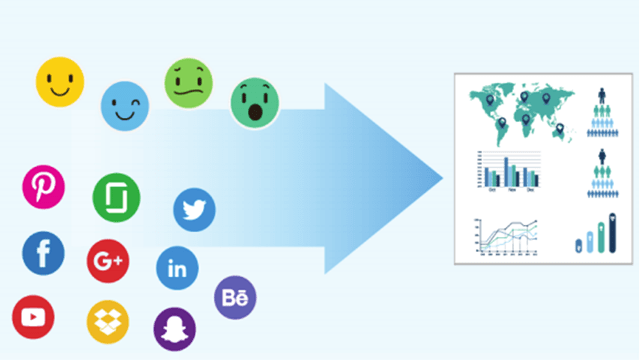SENTIMENT ANALYSIS
Sentiment analysis (or opinion mining) is a natural language processing technique used to determine whether data is positive, negative or neutral. This is a popular way for organizations to determine and categorize opinions about a product, service, or idea. It involves the use of data mining, machine learning (ML) and artificial intelligence (AI) to mine text for sentiment and subjective information.Sentiment analysis is often performed on textual data to help businesses monitor brand and product sentiment in customer feedback, and understand customer needs.
Sentiment analysis systems help organizations gather insights from unorganized and unstructured text that comes from online sources such as emails, blog posts, support tickets, web chats, social media channels, forums and comments. In addition to identifying sentiment, opinion mining can extract the polarity (or the amount of positivity and negativity), subject and opinion holder within the text. Furthermore, sentiment analysis can be applied to varying scopes such as document, paragraph, sentence and sub-sentence levels.
Types of Sentiment Analysis
1. Graded Sentiment Analysis
If polarity precision is important to your business, you might consider expanding your polarity categories to include different levels of positive and negative:
- Very positive
- Positive
- Neutral
- Negative
- Very negative
This is usually referred to as graded or fine-grained sentiment analysis, and could be used to interpret 5-star ratings in a review, for example:
- Very Positive = 5 stars
- Very Negative = 1 star
2. Emotion detection
Emotion detection identifies specific emotions rather than positivity
and negativity. Examples could include happiness, frustration, shock,
anger and sadness. Many emotion detection systems use lexicons (i.e. lists of words and the emotions they convey) or complex machine learning algorithm.
3. Aspect-based Sentiment
Analysis Usually, when analyzing sentiments of texts you’ll want to know which particular aspects or features people are mentioning in a positive, neutral, or negative way. For example, a customer might leave a review on a product saying the battery life was too short. Then, the system will return that the negative sentiment is not about the product as a whole, but about the battery life.
4.Multilingual sentiment analysis
Multilingual sentiment analysis can be difficult. It involves a lot of preprocessing and resources. Most of these resources are available online (e.g. sentiment lexicons), while others need to be created (e.g. translated corpora or noise detection algorithms), but you’ll need to know how to code to use them.Alternatively, you could detect language in texts automatically with a language classifier, then train a custom sentiment analysis model to classify texts in the language of your choice.
Applications of sentiment analysis
Sentiment analysis tools can be used by organizations for a variety of applications, including:
Evaluating the success of a marketing campaign.
Collecting customer feedback from social media, websites or online forms
Conducting market research.
Tracking consumer reception of new products or features.

Informative🙌
ReplyDelete👍👍
ReplyDelete🙌👍🏻👌
ReplyDelete👍👍👍✌
ReplyDelete👍👍👍👍👍👍👍
ReplyDelete👍🏻👍🏻
ReplyDelete💯👍🏻
ReplyDelete